Abstract
The ability of saliva to induce aggregation of Streptococcus sanguis was destroyed by treating the saliva with protease or neuraminidase. Loss of aggregating activity could be correlated with the appearance of free sialic acid. Clarified saliva contains an endogenous neuraminidase that modifies aggregating activity. Aggregation was inhibited by mixed ganglioside preparations but less effectively by acid-hydrolyzed gangliosides. The aggregating activity of S. sanguis was not related to the rhamnose or phosphorous content of the cell wall or to antigen a, b, c, d, or e.
Full text
PDF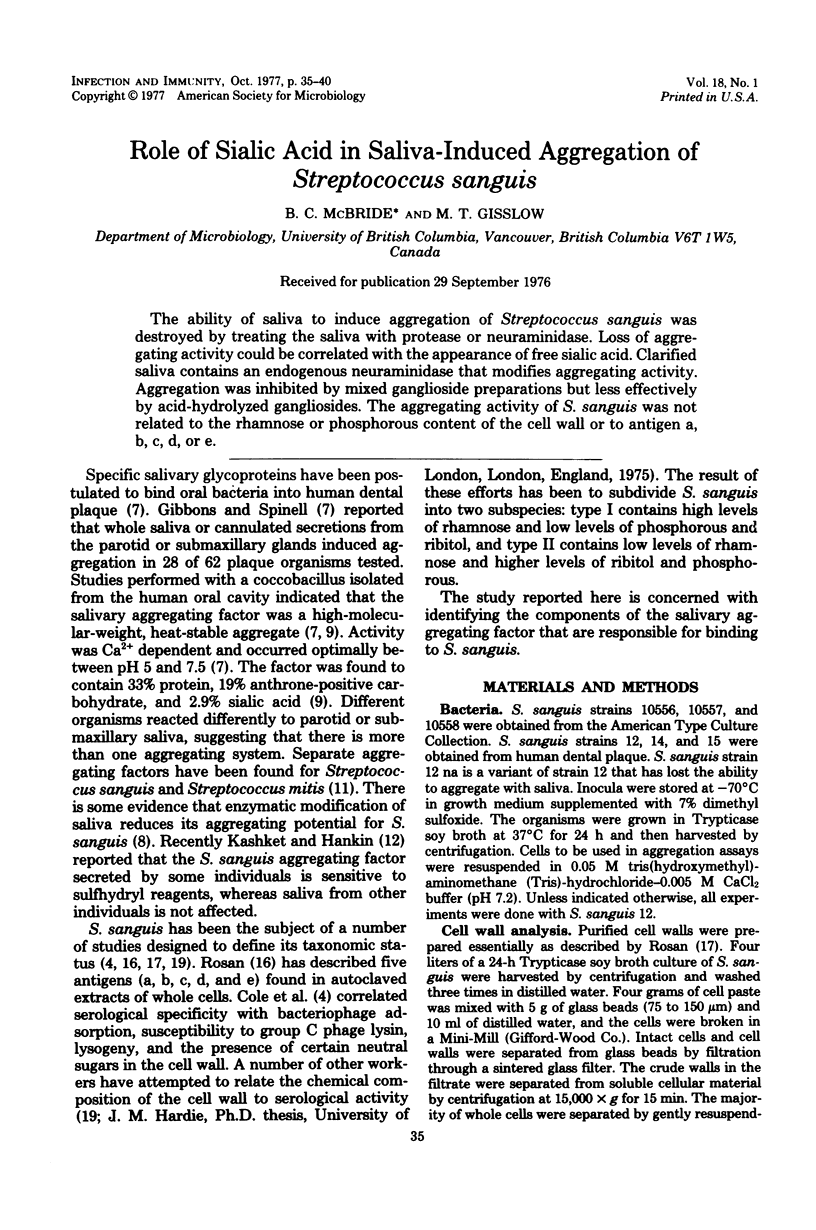

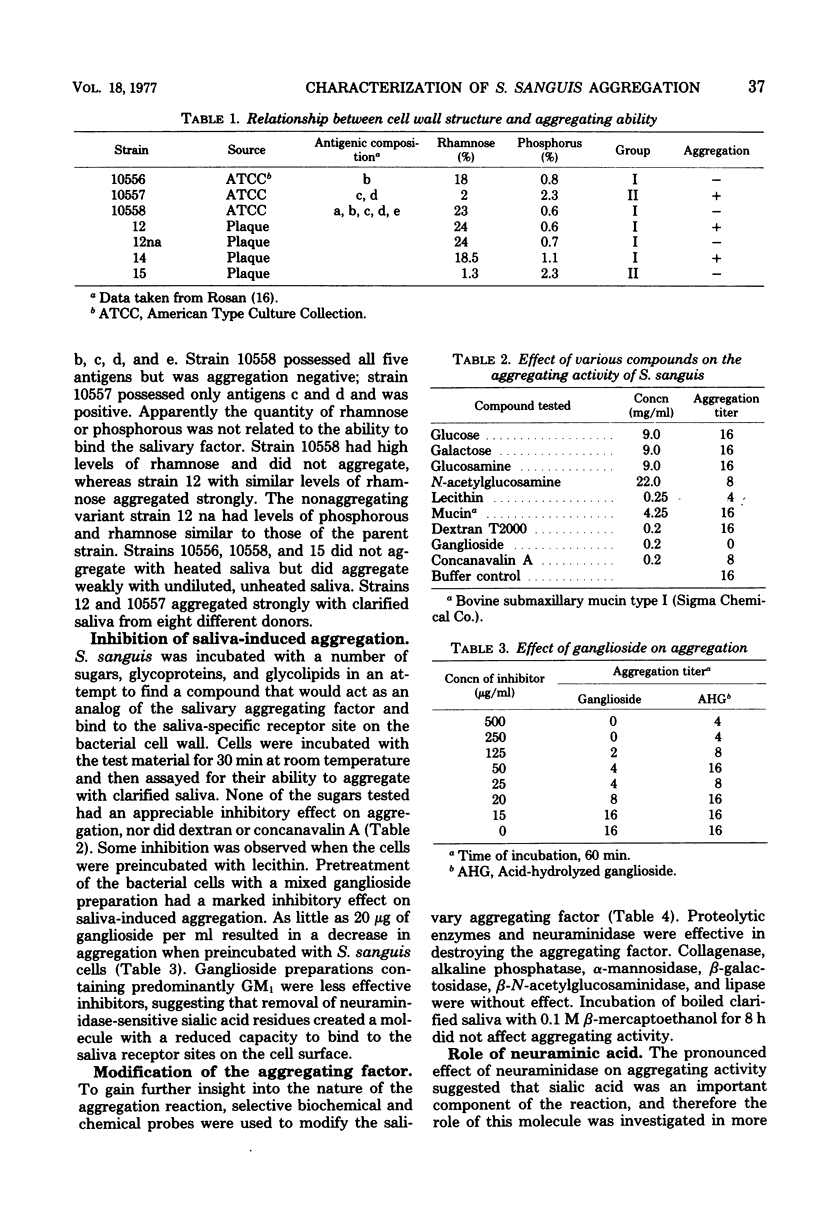
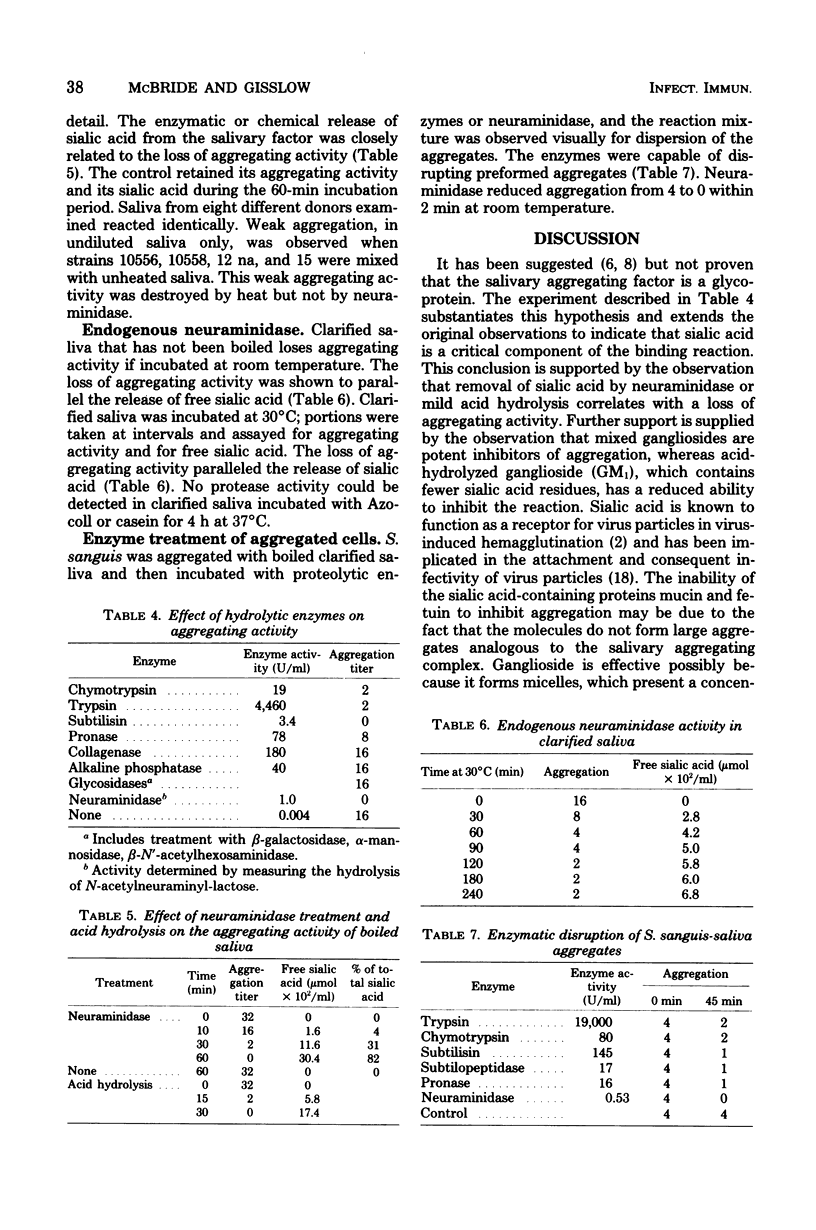
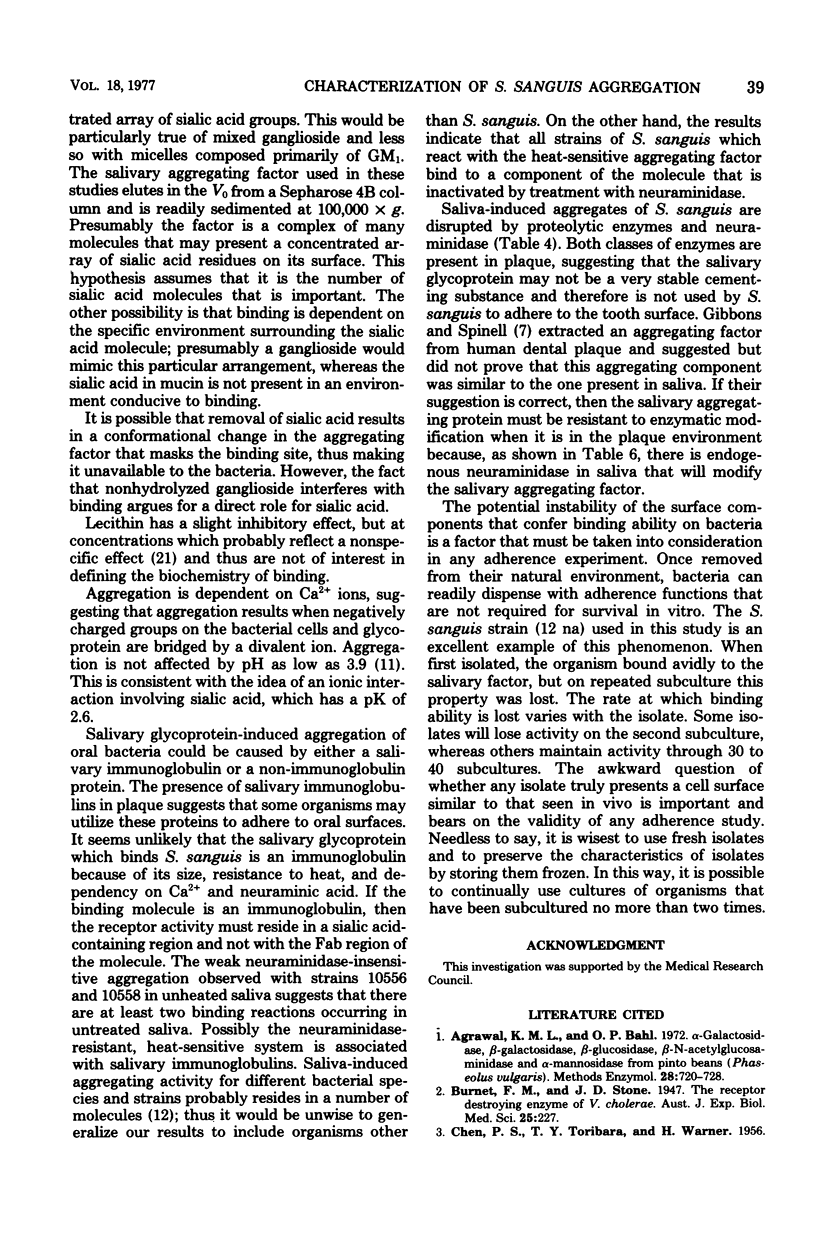
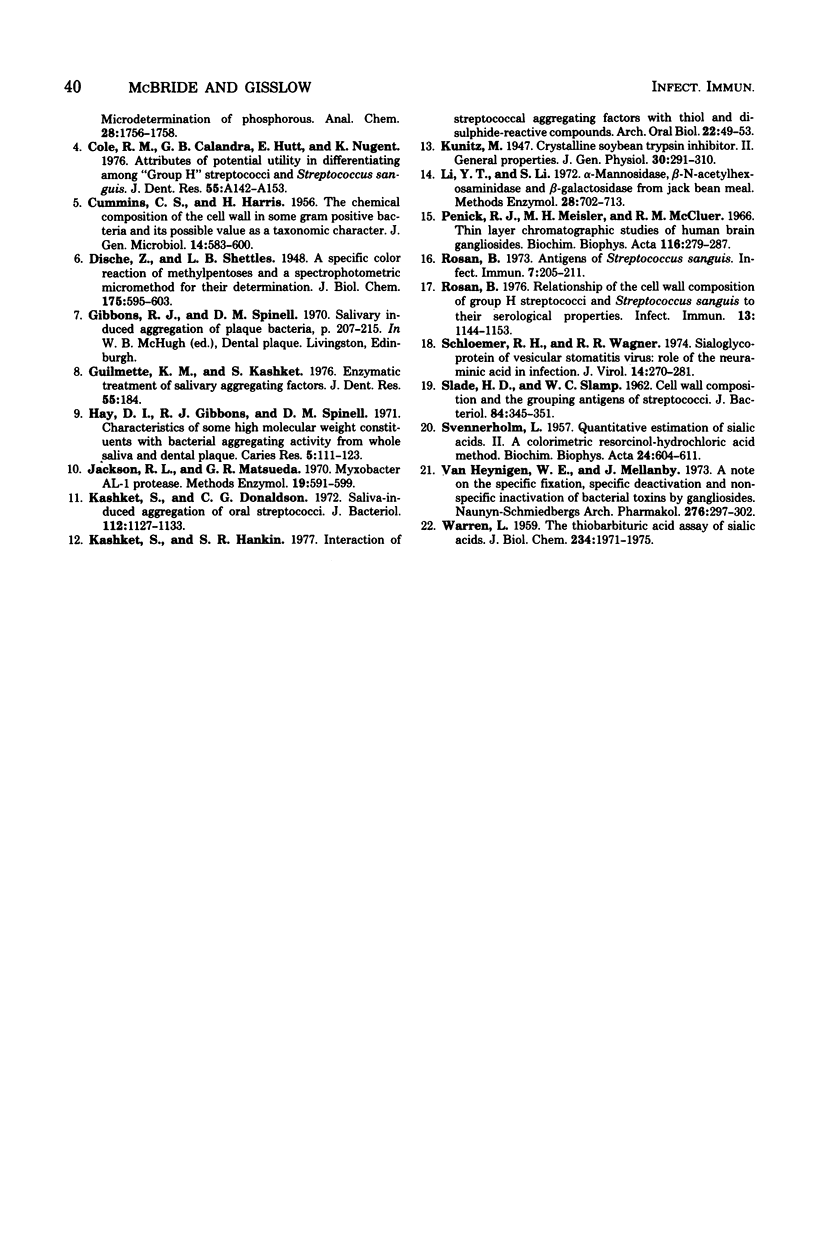
Selected References
These references are in PubMed. This may not be the complete list of references from this article.
- CUMMINS C. S., HARRIS H. The chemical composition of the cell wall in some gram-positive bacteria and its possible value as a taxonomic character. J Gen Microbiol. 1956 Jul;14(3):583–600. doi: 10.1099/00221287-14-3-583. [DOI] [PubMed] [Google Scholar]
- Cole R. M., Calandra G. B., Huff E., Nugent K. M. Attributes of potential utility in differentiating among "group H" streptococci or Streptococcus sanguis. J Dent Res. 1976 Jan;55:A142–A153. doi: 10.1177/002203457605500106011. [DOI] [PubMed] [Google Scholar]
- Hay D. I., Gibbons R. J., Spinell D. M. Characteristics of some high molecular weight constituents with bacterial aggregating activity from whole saliva and dental plaque. Caries Res. 1971;5(2):111–123. doi: 10.1159/000259739. [DOI] [PubMed] [Google Scholar]
- Kashket S., Donaldson C. G. Saliva-induced aggregation of oral streptococci. J Bacteriol. 1972 Dec;112(3):1127–1133. doi: 10.1128/jb.112.3.1127-1133.1972. [DOI] [PMC free article] [PubMed] [Google Scholar]
- Kashket S., Hankin S. R. Interaction of streptococcal aggregating factors with thiol-and disulphide-reactive compounds. Arch Oral Biol. 1977;22(1):49–53. doi: 10.1016/0003-9969(77)90139-x. [DOI] [PubMed] [Google Scholar]
- Penick R. J., Meisler M. H., McCluer R. H. Thin-layer chromatographic studies of human brain gangliosides. Biochim Biophys Acta. 1966 Apr 4;116(2):279–287. doi: 10.1016/0005-2760(66)90010-5. [DOI] [PubMed] [Google Scholar]
- Rosan B. Antigens of Streptococcus sanguis. Infect Immun. 1973 Feb;7(2):205–211. doi: 10.1128/iai.7.2.205-211.1973. [DOI] [PMC free article] [PubMed] [Google Scholar]
- Rosan B. Relationship of the cell wall composition of group H streptococci and Streptococcus sanguis to their serological properties. Infect Immun. 1976 Apr;13(4):1144–1153. doi: 10.1128/iai.13.4.1144-1153.1976. [DOI] [PMC free article] [PubMed] [Google Scholar]
- SLADE H. D., SLAMP W. C. Cell-wall composition and the grouping antigens of Streptococci. J Bacteriol. 1962 Aug;84:345–351. doi: 10.1128/jb.84.2.345-351.1962. [DOI] [PMC free article] [PubMed] [Google Scholar]
- SVENNERHOLM L. Quantitative estimation of sialic acids. II. A colorimetric resorcinol-hydrochloric acid method. Biochim Biophys Acta. 1957 Jun;24(3):604–611. doi: 10.1016/0006-3002(57)90254-8. [DOI] [PubMed] [Google Scholar]
- Schloemer R. H., Wagner R. R. Sialoglycoprotein of vesicular stomatitis virus: role of the neuraminic acid in infection. J Virol. 1974 Aug;14(2):270–281. doi: 10.1128/jvi.14.2.270-281.1974. [DOI] [PMC free article] [PubMed] [Google Scholar]
- WARREN L. The thiobarbituric acid assay of sialic acids. J Biol Chem. 1959 Aug;234(8):1971–1975. [PubMed] [Google Scholar]
- van Heyningen W. E., Mellanby J. A note on the specific fixation, specific deactivation and non-specific inactivation of bacterial toxins by gangliosides. Naunyn Schmiedebergs Arch Pharmacol. 1973;276(3-4):297–302. doi: 10.1007/BF00499883. [DOI] [PubMed] [Google Scholar]


